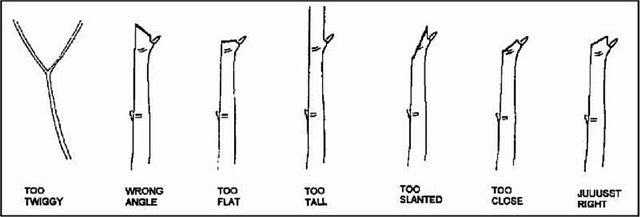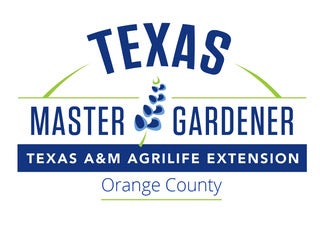Master Gardeners: How to prune rose bushes
Published 12:50 am Saturday, February 6, 2021
1 of 2
|
Getting your Trinity Audio player ready...
|
By Sheri Bethard
Orange County Master Gardeners adapted from Nature’s Way weekly newsletter and Baxter Williams ARS Master Rosarian, Houston Rose Society
TOOLS WE WILL NEED:
- Good pair of leather gloves.
- Sharp bypass pruning shears.
- Folding saw for larger canes.
- Protective clothing, to prevent being scratched.
- Tetanus booster up to date.
HOW-TOs:
- Take a good look at the bush from the ground up. Cut off everything that is dead.
- Saw off short pieces of canes flush (smooth) with the bud union or cane. Be careful not to damage brand new growth on the bud union.
- Look for three or more good strong canes at least pencil diameter. Thumb-sized is even better. A cane whose production was small and spindly (twiggy) with small blooms will be unproductive.
- Floribundas produce a cluster of blooms. Small canes with some branching are acceptable.
- Prune Hybrid Tea roses bushes to strong canes with white pith in the center.
- The picture-perfect rose bush will resemble a tall vase (an open center, with canes on the outer perimeter) when pruned. BUT REMEMBER, rose bushes are like people, not all are picture-perfect.
- Most climbers bloom on last year’s growth or older. Remove older canes (3 – 4 years old) if newer canes are available as replacements. Train canes to grow horizontally for maximum bloom production.
- Old Garden Roses are pruned lightly. Remove dead and twiggy canes.
GENERAL “RULES OF THUMB”:
- Always hold shears so the sharp cutting blade is nearest the roots (the “fat” blade contacts the part that is cut away).
- Make each cut about 1/8-inch above an outward-facing eye.
- Cut down to clean white pith in the center of the cane. Discolored pith is a sign of freeze or other damage.
- Seal canes with white Elmer’s glue to protect from insects (cane borers), etc..
- Remove as many “dog-legs” as possible. There is a tendency to cut a stem, leaving two or three eyes, and then do the same thing the next time we cut a stem, thereby making a “dog-leg” effect. Should you choose to leave a secondary stem, at least two eyes must be left for future production (one eye will not do the job).
- While there is NO set height to prune a bush, a good rule of thumb is to remove at least the top 1/3 to 1/2 from the bush, leaving the bush at about 30-inches.
- When pruning is completed, remove all remaining old foliage from the bush.
10 Mistakes Made with Roses:
- Wrong time. Best time for “pruning” (deep cuts into a bush) is the coldest, wettest day of the year. For us that means mid-February = Valentine’s Day. After these deep cuts, just “groom” bushes.
- Wrong tools. NEVER use anvil-type shears. ALWAYS use bypass shears (where blades pass), and wear leather gloves.
- Wrong stem size. “If it is smaller than a pencil, cut it off.” The stem’s next growth at that place will be that same diameter. Larger stems are better for larger blooms needing strong stem support.
- Shears held wrongly. Bypass shears blades are two sizes, one very thin and sharp, the other thick curved. Place thick blade against the piece to be cut away so the cut will bruise the cutting and not the remaining plant.
- Wrong place on the stem. Cut about 1/8-inch above where a leaf is/was attached. The old advice to ” cut at ¼” and a 45-degree angle” is mostly untrue. A 1/8-inch cut gives better results. Leaving a longer stem piece could cause stem die back to the leaf (or lower).
- Wrong angle of cut. Any angle near 45-degrees or a totally horizontal cut are both OK. A rakish, smaller angle cut is very bad. Some think you must cut at an angle to keep water from causing rot by it sitting on the cut but it would have soaked in or evaporated long before.
- Wrong, or no, post-cut care. In general, no post-cut stem treatment is required. If something does go wrong at the site, trim the stem a little farther down. If you are cutting an old stem at the bud union (big knot with all of the stems emanating from it), seal the cut. DO NOT USE BLACK TREE PRUNING PAINT! It will burn the stem’s cambium layer. Use white glue.
- Fail to protect after pruning. It’s INCORRECT to assume a bush is safe from disease. Blackspot fungus, the bane of rose growers, over-winters on stems, whether there are leaves or not. Protect plants immediately after pruning to prevent future defoliation, particularly if neighbors’ roses are infected with blackspot.
- Feed the bush too soon, or too much. Roses are dormant (not growing) in mid-February. As soon as the soil warms up, roses need “to eat.” Moderate feeding with a balanced rose food will be in order, with a repeat feeding in about 4 weeks. Too much food overly stresses the plant, causing defoliation.
- Try to do it alone. While you can prune a bush without help, it might be advisable to seek advice from a Consulting Rosarian. That person is trained to prune and is experienced in techniques.
For your horticulture questions, please contact our Hot-Line at 409 882-7010 or email ocmg1990@gmail.com.








